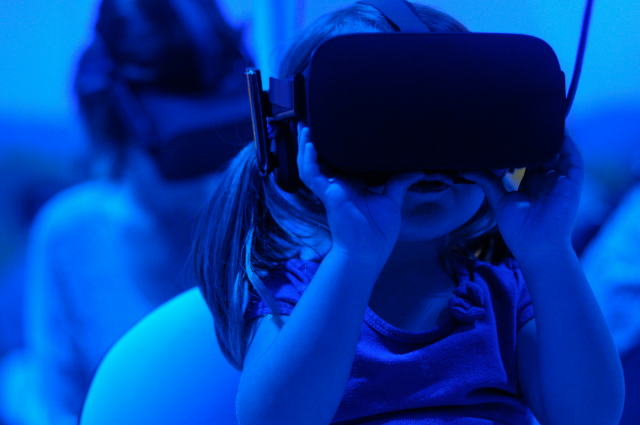"Digital twins are not just about creating a virtual copy of a physical object; they represent a fundamental shift in how we approach problem-solving and innovation. By harnessing real-time data and simulations, we can anticipate challenges, optimize performance, and ultimately make smarter decisions that benefit our society as a whole." - Dr. Jane Smith, Technology Innovator and Researcher
INTRODUCTION TO DIGITAL TWINS
A digital twin is basically a digital copy of something that exists in the real world. It can be a machine, a building, a vehicle, or even a whole city. This virtual replica mirrors the physical object, collecting real-time data from it and allowing us to monitor, test, and analyze its performance without having to touch the real thing.

Where Did They Come From?
Digital twins have their roots in industries like manufacturing and aerospace. Initially, they were used to simulate and track the performance of complex machines, such as jet engines or factory equipment. This allowed engineers to test different scenarios and predict problems before they happened, without risking damage to the actual machinery.
Why Are Digital Twins Growing So Fast?
Over time, other industries saw the value of digital twins and started using them in new ways. Today, healthcare professionals use digital twins to model a patient’s body for personalized treatment, and city planners create digital twins of entire urban areas to manage resources and traffic more effectively. I
n transportation, they are used to monitor vehicle performance and improve safety. As the technology continues to evolve, more sectors are finding new ways to use digital twins for smarter, faster decisions.
HOW DIGITAL TWINS WORK
1. Real-Time Data Collection:
At the heart of a digital twin is real-time data collection. Sensors placed on physical objects gather live data, whether it’s a machine on a factory floor or a vehicle on the road. This data includes everything from temperature and pressure to movement and performance metrics. The goal is to capture what’s happening with the physical system as it operates.
2. Machine Learning and Simulations:
Once data is collected, machine learning algorithms step in to analyze patterns and predict future behavior. The digital twin can simulate how the system will respond under different conditions. For example, in manufacturing, a digital twin can test how a machine will perform if parts wear down or conditions change, helping avoid costly downtime.
3. Integration of Sensors, IoT, and Cloud Computing:
Sensors connect physical systems to their digital twins through the Internet of Things (IoT). These sensors feed data to the cloud, where massive amounts of information are stored and processed. Cloud computing allows the twin to function without limitations on storage or computing power. As a result, even complex systems can be modeled accurately and updated in real-time.
4. Artificial Intelligence (AI) and Data Analytics:
AI and advanced data analytics play a crucial role in making sense of the collected data. Instead of just showing raw numbers, AI interprets the data and provides meaningful insights. This is where digital twins really shine—they don’t just mirror real-world objects, they help improve decision-making by highlighting potential problems or opportunities. AI turns the digital twin into a smart assistant that helps businesses or professionals react quickly and make informed choices.
5. Actionable Insights and Continuous Improvement:
The magic of a digital twin lies in the actionable insights it generates. By continuously processing data, it doesn’t just reflect the system’s current state but also offers suggestions for improvements. Whether it’s enhancing efficiency, reducing waste, or predicting failures, the twin provides real-time advice to keep things running smoothly and efficiently.
This blend of real-time data, cloud computing, AI, and IoT transforms digital twins from simple models into powerful tools that mimic, predict, and optimize real-world systems.
APPLICATIONS ACROSS DIFFERENT INDUSTRIES

Digital twins have found their way into many fields, offering unique ways to improve operations and decision-making.
- Manufacturing: In factories, digital twins are used to create virtual models of production lines. These models help companies monitor machinery, predict when something might break, and make adjustments to improve efficiency. By catching problems early, businesses can avoid downtime and save money.
- Healthcare: In medicine, digital twins are opening up new possibilities for patient care. Doctors can now create virtual replicas of a patient’s organs or even their entire body. This allows them to test different treatments or surgeries without actually performing them, helping to choose the best option. It's like giving doctors a "practice run" before they do the real thing.
- Smart Cities: Cities are getting smarter with the help of digital twins. Urban planners can create virtual versions of city infrastructure, like roads, bridges, and public transport systems. By analyzing traffic patterns or energy use in these models, they can figure out the best ways to reduce congestion, improve services, or allocate resources more efficiently.
- Aerospace: The aerospace industry uses digital twins to simulate how aircraft will perform under different conditions. Engineers can test how planes handle stress, turbulence, and various weather conditions, all in a virtual environment. This helps improve the safety and design of aircraft, long before they take off in real life.
Digital twins are making a real difference by helping industries operate more smoothly and plan for the future. Each industry uses them in its own way, but the goal is always the same: better decision-making through deeper insights.
BENEFITS OF DIGITAL TWINS IN DECISION-MAKING
1. Predictive Maintenance:
Digital twins allow companies to keep a close eye on their equipment through real-time data. This means they can spot potential issues before they become serious problems.
For example, if a machine shows signs of wear and tear, the digital twin can predict when it might fail.
This early warning helps businesses perform maintenance only when needed, rather than on a fixed schedule, reducing both downtime and unexpected breakdowns.
2. Reduced Downtime:
By using digital twins to simulate and monitor systems, businesses can avoid unexpected interruptions. If a problem is detected, solutions can be tested virtually before any physical changes are made.
This proactive approach minimizes unplanned downtime, ensuring that operations run smoothly and efficiently.
For instance, a factory can keep its production line running while troubleshooting and fixing issues in the virtual model.
3. Cost Savings:
Implementing digital twins can lead to significant cost savings. Since businesses can anticipate problems and optimize their processes through simulations, they can avoid costly repairs and inefficiencies.
Additionally, digital twins help in making informed decisions about resource allocation, which can save money in the long run.
For example, optimizing energy usage in a smart building can lower utility bills.
4. Enhanced Performance Optimization:
Digital twins provide a comprehensive view of how systems perform in various scenarios. This enables companies to tweak and refine their operations for better performance.
By running different simulations, businesses can identify the most efficient settings and strategies.
For instance, a digital twin of an aircraft can be used to test various flight conditions to optimize fuel efficiency and performance.
5. Data-Driven Adjustments:
One of the greatest advantages of digital twins is their ability to make data-driven decisions without disrupting actual systems.
By analyzing the virtual model, companies can test potential changes and understand their impacts before applying them in the real world. This means adjustments can be made with confidence, leading to improved overall efficiency and effectiveness.
For instance, city planners can use digital twins to test traffic flow changes and find the best solutions without affecting real traffic.
Digital twins are revolutionizing decision-making by providing a detailed, dynamic view of systems. They enable businesses to anticipate issues, save costs, optimize performance, and make informed decisions with minimal disruption.
CHALLENGES AND FUTURE PROSPECTS
Data Security Concern
One of the main challenges of using digital twins is data security. As these virtual models rely heavily on data from real-world systems, they often collect sensitive information.
If this data is hacked or misused, it could lead to serious consequences for businesses and individuals. Companies must prioritize strong security measures to protect this data and ensure that their digital twins remain safe from cyber threats.
Integration Complexity:
Integrating digital twins into existing systems can be complicated. Many organizations have legacy systems that might not easily connect with new technologies. This can lead to operational hiccups and require significant time and resources to sort out.
Businesses need to carefully plan and possibly invest in new infrastructure to make sure that digital twins function effectively alongside their current operations.
Implementation Costs:
The initial cost of implementing digital twin technology can be a barrier for many companies, especially smaller ones. The expenses include purchasing sensors, software, and other technologies needed to create these virtual models. While the long-term benefits can outweigh these costs, organizations often hesitate to take the plunge due to the upfront investment required.
Future Advancements:
Looking ahead, the adoption of digital twins is likely to grow as technology continues to advance. As the costs of sensors and computing power decrease, more businesses will find it feasible to implement digital twin solutions. This could lead to widespread use across various sectors, making digital twins a standard practice rather than a novel idea.
Ethical Considerations:
With the rise of digital twins comes the need to think about ethical issues. As these virtual models can represent real people and systems, concerns about privacy become more pressing. There’s a need for guidelines and regulations to ensure that data collected for digital twins is used responsibly. It’s essential to find a balance between leveraging the benefits of this technology and protecting individuals' rights and privacy.
By addressing these challenges and keeping an eye on future advancements, organizations can better prepare for a world where digital twins play a crucial role in decision-making processes.
CONCLUSION
Digital twins are reshaping how industries operate by providing valuable insights that help make better decisions. They allow companies to see what's happening in real time and test different scenarios without any risk.
Although there are challenges in adopting this technology, the advantages, like increased efficiency and cost savings, make it worthwhile. As technology continues to advance, including AI and data analytics, digital twins will become even more important for innovation.
The future looks bright for this exciting technology, promising smarter solutions in various fields.
